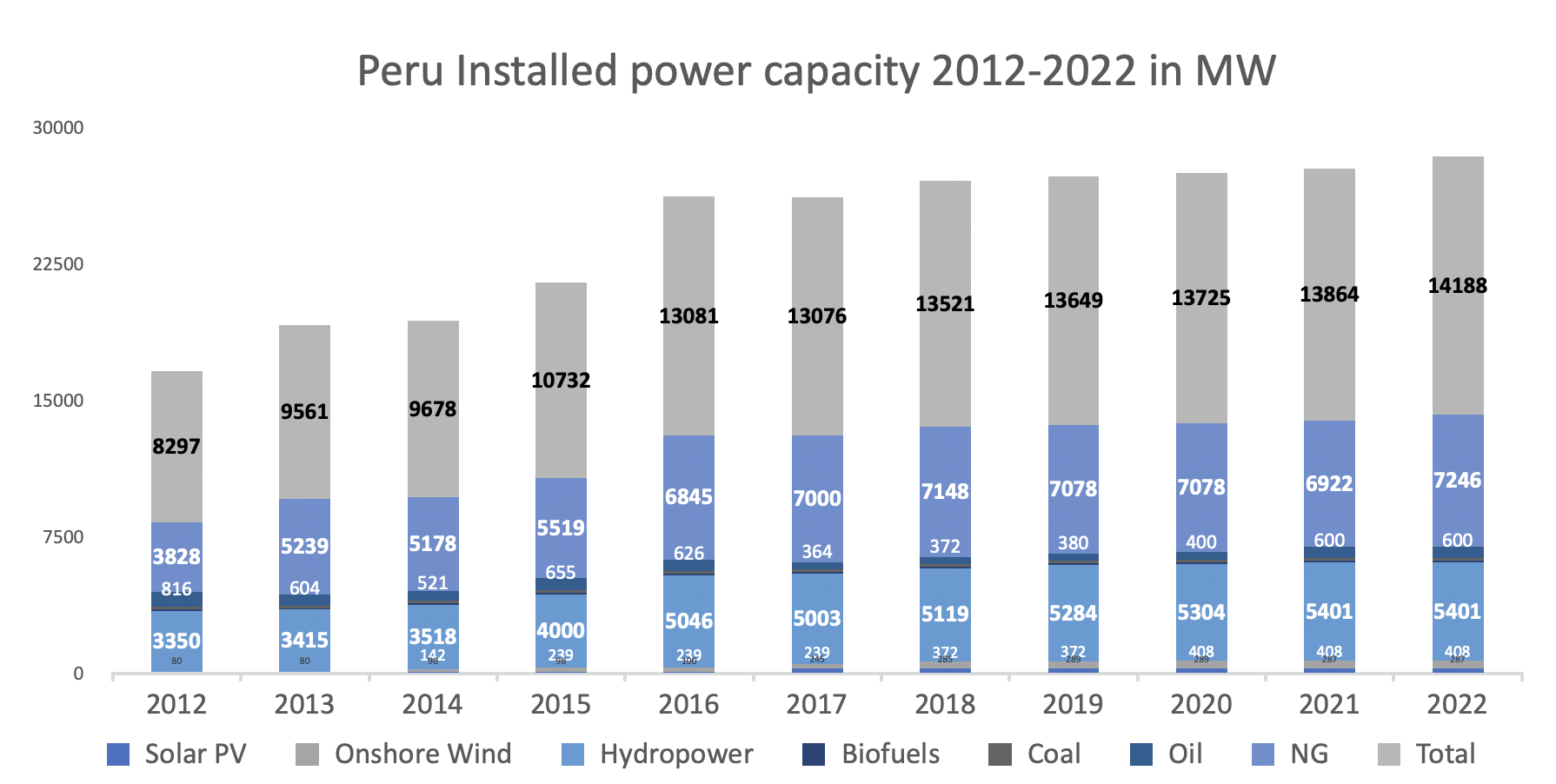Peru is situated in the western part of South America and shares borders with Ecuador, Colombia, Brazil, Bolivia, and Chile. Peru is rich in hydrocarbons and has oil, natural gas, and coal reserves (2). It is one of the world’s leading minerals producers, ranked second in copper production and in top five in lead, silver, tin and zinc. It’s also the eight largest producers of gold (3).
Economic development does come at cost of emissions, and Peru has set ambitious target of reducing emission by 40 percent from BAU scenario by 2030 and become carbon neutral by 2050 (4).
Peru has a total installed power capacity of ~14 GW, with majority of it supported by natural gas (~51 percent), hydropower (~38 percent). Peru is blessed with enormous potential of solar and wind resources but currently lags behind in utilization of its renewable resources (solar & wind).

Peru has great potential to develop green hydrogen domestically with levelized cost of hydrogen dropping from 2.5-5 USD/kg in 2030 to 1.13 -1.6 USD/kg in 2050, approximately 1 GW electrolysers in 2030 to 13 GW in 2050 and supplemented with substantial renewable capacity additions of nearly ~21 GW by 2050 (5 ).
Peru has great potential to develop green hydrogen domestically with levelized cost of hydrogen dropping from 2.5-5 USD/kg in 2030 to 1.13 -1.6 USD/kg in 2050, approximately 1 GW electrolysers in 2030 to 13 GW in 2050 and supplemented with substantial renewable capacity additions of nearly ~21 GW by 2050 (5 ).
First estimation of the potential national demand for Green Hydrogen tons/year (6 )
| Sectors | 2030 | 22040 | 2050 | |
|---|---|---|---|---|
| Refineries | 4597 | 13339 | 15480 | |
| Fertilizers | 8229 | 18503 | 41444 | |
| Transport | 2456 | 16370 | 84035 | |
| Injection in NG networks | 1361 | 6635 | 30329 | |
| Mining | 5929 | 19763 | 112338 | |
| Steel | 8745 | 25760 | 25760 | |
| Total | 31317 | 100370 | 354764 |

H2 Peru, Peruvian Hydrogen Association were created an year ago in collaboration with multiple energy sector stakeholders and Peru government’s support to promote development of green hydrogen in the country. H2 Peru presented a roadmap to the Peruvian authorities, the key takeaways are highlighted below (7 ).

Not Available (NA)
MMEX: The Company has entered advanced discussions with Peru’s principal electric power distribution company to develop potentially a Green Hydrogen project to produce up to 55 tons per day of hydrogen, requiring 160 MWe of constant and certified renewable power load. The Company plans to use its Siemens Energy Electrolyzer FEED template and adapt it for Peru (11 ).